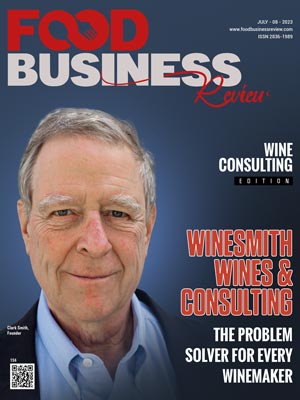One of the fastest-growing segments of the American economy consists of 12,000 tiny Mom and Pop wineries, an average of more than 100 in every U.S. State, turning out unique wines you won’t find on retail shelves or restaurant lists .
Starting a small winery involves a rude wake-up call. Commonly, the principals waste enormous time and money in trial-and-error journeys that go far beyond the challenges of wine making itself.
Since Clark Smith founded in 1990 his tiny firm, WineSmith Wines & Consulting, he has supported thousands of wineries with game-changing inventions, teaching and writing. He shares experience gained from 63 vintages (including 14 in the Southern Hemisphere) as well as thirty years as a 2,000 case winery operator “been there, done that” expert in the boutique winery game. “Most of the mistakes you can make,” says Smith, “I’ve already made myself.”

Yet decades of experience aren’t enough. Techniques, equipment, biologicals, software, compliance needs and vineyard challenges are constantly evolving. Smith makes it his business to stay current. The I+Q Conference named him 2016 Innovator of the Year and the industry looks forward to his annual report on Game-Changing Technologies. His 2013 book, Postmodern Winemaking was named Wine & Spirits Magazine’s Book of the Year and is considered required reading for many university courses and wine making teams.
“Startups don’t typically lay the required groundwork before they jump into the game,” says Smith. “You make some wine in a trash can in your garage, your neighbors tell you it’s great, and next thing you know, you’ve gone pro. But you haven’t articulated your intention and a plan to manifest it.”
WineSmith’s Start-Up Sequence can be found on winemaking411.com.
1. Purpose - It is essential to boil down to a few memorable words what you are committed to. From these few words flows everything you do from the grapes you plant to the styles you make to label and website design. When pulled in other directions, you need to be able to reply with clarity “That’s just not what we do.”
2. Team Systems - Even if you are the only employee, you still have to wear dozens of hats and make time to fulfill the responsibilities associated with them. It’s a good strategy to start off gaining familiarity with everything that needs to be done so you’ll be able to guide new staff.
Winegrowing is the practical art of connecting the human soul to the soul of a place by rendering its grapes into liquid music
4. Vineyards - You’ll probably start by buying grapes, but if vineyards are in your future, now is the time to select varieties and real estate.
5. Product Styles And Protocols - It’s now time to solidify the details of vinification according to your passion, vision, and ethics. We’re renowned for transforming dreams into protocols.
6. Winery Design - Your budget will tell you what winery to design and what precise equipment to install. Details matter. WineSmith has designed dozens of winery floor plans.
7. Marketing - You will have been working from the beginning on a website that tells your story and collecting customer contacts. Now you can plug in product details, clubs and events and launch!
8. Sales - You’ll need to pick systems that minimize cost and labor and maximize automation. We’ve tried them all! Let us save you time and trouble.
Thank you for Subscribing to Food Business Review Weekly Brief




